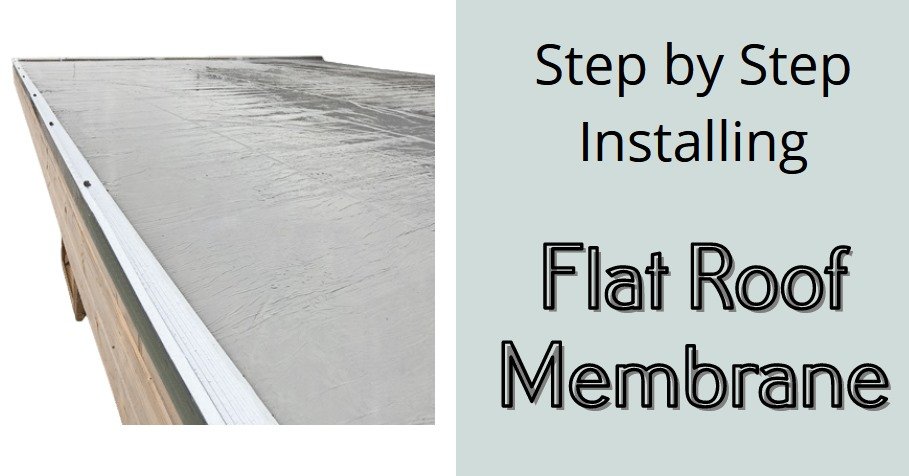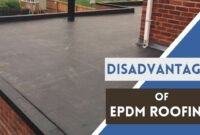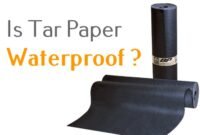For the roof to be of maximum use, all its components must work harmoniously. From high-performance insulation, vapor control membranes, integrated gutters, security systems, and ceilings to smoke vents, we will tailor the design to the requirements of the building project.
It allows for more precise specifications and installation to ensure your roof will continue to function properly throughout the life of the building.
Flat roofs offer more than just shelter. They can be an additional space for your family, helping reduce the carbon footprint of factory emissions with better insulation. Or present it as a garden for the whole community.

What is a Membrane Roof?
Membrane roofs are roofs or tents that are generally white. This roofing material has a unique and elegant structure compared to the type of canopy roof with ordinary materials. Its remarkable appearance makes this roof widely used in residential and commercial buildings to make it look elegant and luxurious.
But wait, there’s more! This roof is also used as a shade in the Grand Mosque and has become an exciting photo spot. There are various types of membrane roofing that you can choose according to your needs and home design.
Flat Roof Rubber Membrane and How to Use It
EPDM rubber roofing or rubber membrane is a Class M rubber membrane according to the D-1418 ASTM standard; class M consists of elastomers having a polyethylene-type saturated chain (the letter M comes from polymethylene, a more precise term).
EPDM membranes have a rubber with a saturated polymer backbone; EPDM roofing installation is much more resistant to heat, light, and ozone than unsaturated rubbers such as natural rubber, SBR, or polychloroprene (Neoprene).
Thus, EPDM can be formulated to withstand temperatures up to 150°C and, if prepared correctly, can stay outdoors for years or decades without breaking down. EPDM has good low-temperature properties, with elastic properties up to -40°C depending on grade and formula.
Things You’ll Need to Install Rubber Roofing
Now the fun part—installing a flat roof membrane, knowing how to DIY rubber roofing repair and replacement may save a lot of money because many rubber roofs may have a shorter lifespan (20–30 years) than other roofing materials.
Tools and Equipment You’ll Need
- Paint brushes
- Seam sealant
- Membrane glue
- Silicone hand roller
- Solvent-based cleaning solution
- Sturdy roofing ladder
- Brush for roofing
- Membrane scissors
- Safety gloves and goggles
- Seam adhesive
- Membrane scissors
- Penny roller
- Roofing rolls and underlayment, if necessary
How to Install a Flat Roof Membrane
- Step 1: Assemble Your Tools and Supplies
The first step in installing a flat roof membrane is gathering all the equipment and supplies required for your job should be your priority. It covers everything on the previous list, but you should also be sure to read the installation instructions provided by any particular roofing manufacturer.
- Step 2: Remove the Current Roofing
It is technically possible to install rubber roofs on top of existing layers, but it is usually best to remove the old roof before installing the new one. So once you’ve gathered all your equipment and supplies, it’s time to remove the old roofing. Before continuing, remove any debris, including the old shingles or rubber layers, flashing, nails or fasteners, and vents using a flat pry bar.
- Step 3: Make Sure the Roof Deck is Secure
The roof decking should then be as securely fastened as possible. The roof deck will support your new rubber roof, the last barrier against leaks. So before continuing, make sure the roof deck is free of any decay, leaks, bumps, or fractures. If so, address those issues before putting in the new roof.
- Step 4: Install the Insulation
Install the additional insulating layer if your particular type of rubber roofing calls for it so that you may put the rubber roofing on top of it later. When installing a flat roof membrane, wear the proper protective clothing, such as gloves and goggles, and be aware of any chemicals in the insulating layers.
- Step 5: Put the Rubber Roofing Down
You may start installing the rubber roofing now that the insulation has been installed. As discussed in this tutorial, various roof types require different installation techniques. To make a tight seal throughout the whole surface area before locking it, spread the sheets and draw them over any hills or dips.
- Step 6: Adhere Sufficiently
Different rubber roofing kinds need other adhesion methods. Therefore, follow the manufacturer’s instructions, whether you are mechanically adhering, heat applying, cold applying, or nailing the material down.
- Step 7: Close the Seams
The seams of rubber roofs are where leaks are most likely to occur. To guarantee a watertight seal, carefully lay your seam adhesive or seam tape on each seam. Then, review your work and scan it for any holes or cracks. Apply a second line of seam glue or tape to double-layer over any fractures.
Bottom Line
Once you’ve finished installing a flat roof membrane on the entire surface of the roof, make one last inspection, paying attention to any seams, roofing components like vents and chimneys, and the roof’s borders. Before completing the job, check for any gaps, lumps, peeling edges, and other issues that may be fixed quickly using tacks.
Always step lightly since some rubber roofs might become loose or damaged by foot movement. Be careful when ascending and dismounting the roof, watch your step, and keep sharp items off the roof surface.


